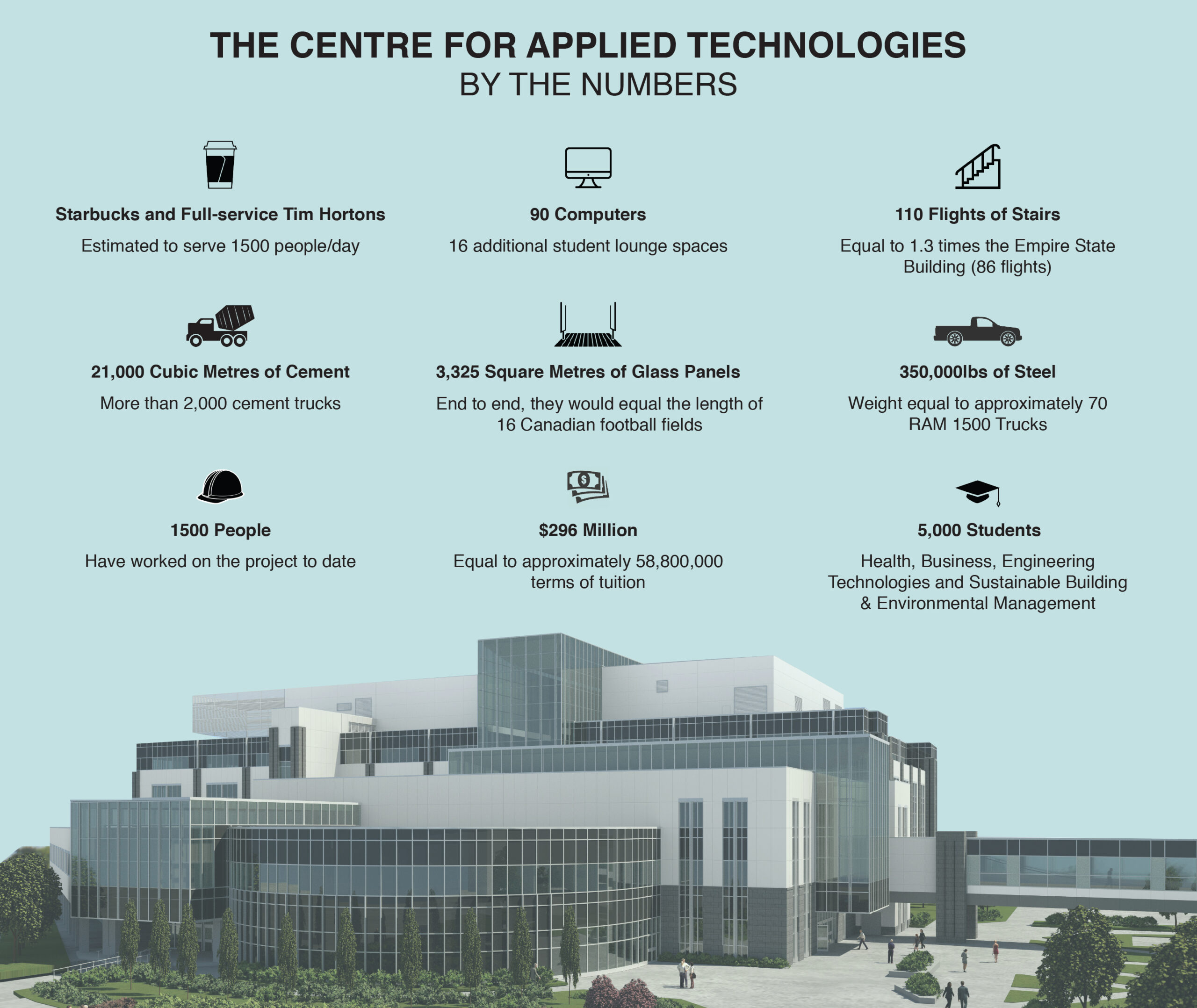As construction nears completion on the Centre for Applied Technologies build-ing, the next part of the project is about to start – transitioning staff, students and equipment from the Health, Business, Engineering Technologies, and Sustainable Building and Environmental Management programs. With only a few months left until the expected completion of the move, scheduled for July 29, the teams working behind the scenes are busy making sure the transition is as smooth as possible.
Clayton Davis, Executive Director, Human Resources, says that transitioning the staff has been a huge part of the process. About a year ago, they realized a lot of staff were nervous about the move, and, rather than ignore it, a team was created to focus on the transition.
For Davis, the most exciting part of the CAT project is “the opportunity, both for staff and students. It’s totally different from everything we have right now.”
From careful planning to create an inviting cafeteria that offers everything from grab-and-go sandwiches and reservable tables at a full-service pizzeria, to world-class architectural choices, everything is “being done in the best way possible.”
Unlike many institutional buildings that often receive an unfortunate cookie-cutter approach, the CAT building has been built with attention to detail and function. Whether you’re in the executive offices or student spaces, walking down a hall or popping into a washroom, you’ll notice the same calibre of craftsmanship. Washrooms are brightly lit and feature hand-set tiling, lighting fixtures with a cloud-like component that acts as a sound barrier in common spaces and a bright colour palette. Also coming to campus is new signage – a company specializing in wayfinding is putting together a cutting-edge visual system to help people navigate effectively.
Micaela Brown, CAT Move-In and Transition Project Manager, has a plan for moving in the furniture. Each school has been working directly with the project team to ensure the move and settling into the new space goes smoothly. A bit trickier than co-ordinating furniture moves is the transition process, which will ensure that instructors know how to use all of the new technology and adapt to the new classrooms.
For the physical move, NAIT has called in the pros. Health Care Relocations (HCR), a large-scale move consultant, has helped to create a plan to ensure everything is handled properly. Earlier this year, the move vendor was selected, ensuring things will actually be picked up and set into their new homes.
Brown says that they’re “continuing to work with HCR and our stakeholders to finalize the schedule and make sure we’re getting everything and everyone that needs to move over accounted for.”
Whether it’s someone’s beloved office plant, a box of essential files or an important piece of lab equipment, the plan is in place.
Still worried? The building has included lots of plug-ins and the building’s powerful WiFi network has more density and breadth than the rest of campus combined.
Sounds good to me!
Danielle Fuechtmann, Editor-in-Chief






